That means thousands of tons of metals, plastics, and even dangerous chemicals are taking up space and damaging ecosystems all over the planet.
Luckily, more and more people are becoming informed about how to properly recycle and dispose of electronics. However, electronic waste, or “e-waste,” is still a major polluting factor.
That’s where artist Julie Alice Chappell comes in.
Like many artists, she uses her talents to address current events: to help raise awareness about e-waste, its impact, and how it can be recycled into something new.
And just like the artists who use sludge from a polluted river to create gorgeous paintings, Chappell also finds a way to turn something ugly, like garbage, into something beautiful.
Chappell turns the circuit boards, wires, and other tiny components of computers and other electronics into delicate sculptures of insects.
The wires become legs and antennae, resistors become eyes and joints, and the circuit boards become jewel-colored wings.
Check them out below, and see how everyday electronics can become gorgeous pieces of nature-inspired art!
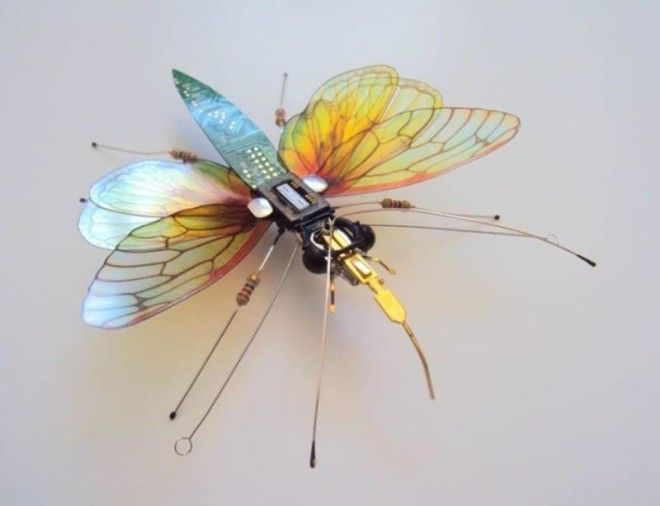
Julie Alice Chappell is a sculptor who creates these small, delicate insect sculptures using parts from old computers and other electronics.
Aptly, she calls her collection of sculptures, “Computer Bugs.”
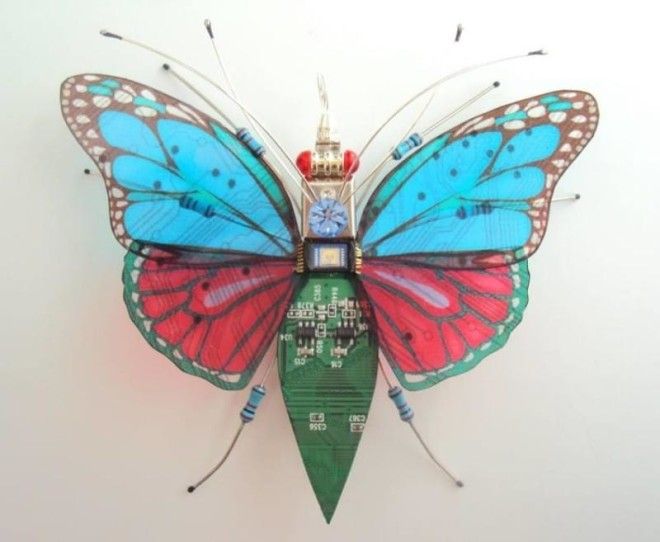
Everything you see on each sculpture comes from an electronic device that has been cut and shaped into the organic form of an insect.
Chappell will also add the occasional tiny Swarovski crystals for extra sparkle, and adds in some of the patterning, as seen on this butterfly’s wings.

It turns out that the insides of your computers, phones, and other devices are amazingly colorful!

To a lot of people, it may seem as though the inside of a computer is pretty different from nature, but Chappell doesn’t see them as being so.

“With all their tiny components, complex circuitry, and bright metallic colors, I cannot help but compare [computer parts] to the detailed patterns we see when we look at nature up close,” she explains.
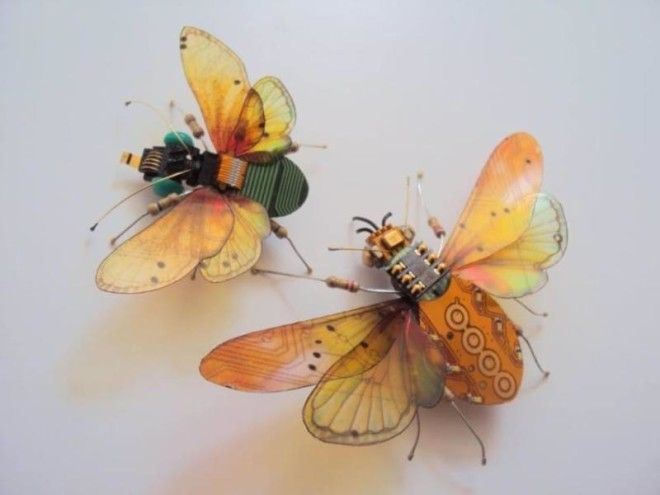
Chappell got the idea to turn electronic parts into insects a few years ago.
She was at her local materials exchange center, where companies send unused or unwanted items that can be used by artists, schools, or whoever needs them.
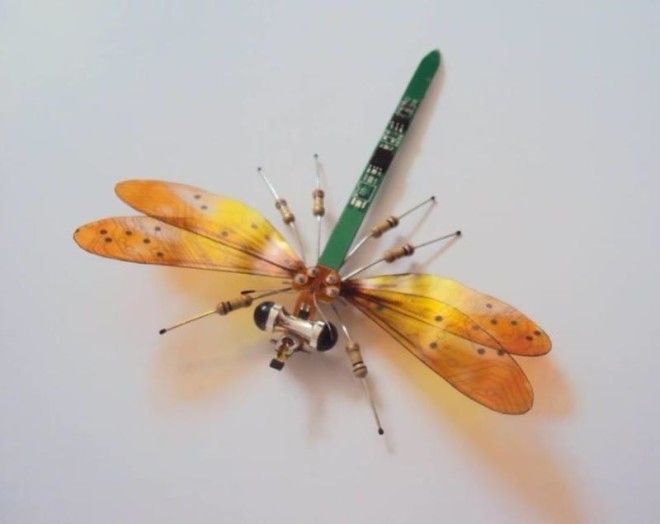
When she picked up a box of electronic components, all the tiny wires and bits immediately reminded her of ants.
And that was how the Computer Bugs were born.
Advertising
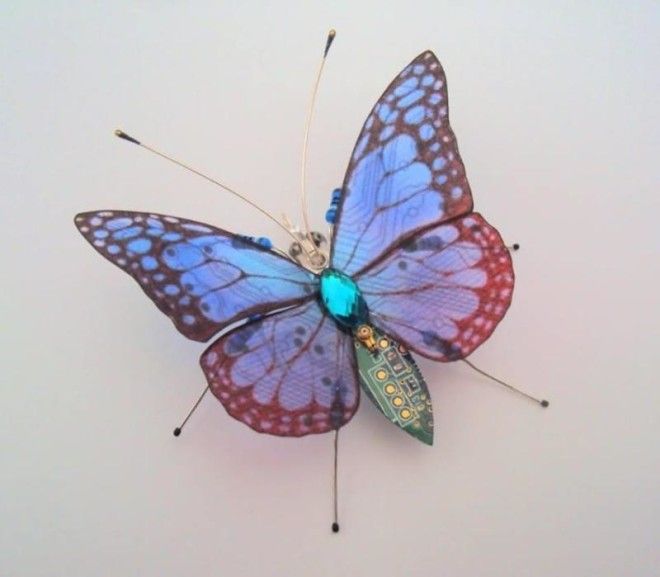
Today, most of the computers Chappell finds are simply out on the street or dumped in public — they’re actual garbage.
In regard to computers, that means hazardous metals like lead, mercury, cadmium, and lithium are continuously leaking into the surrounding soil and water.
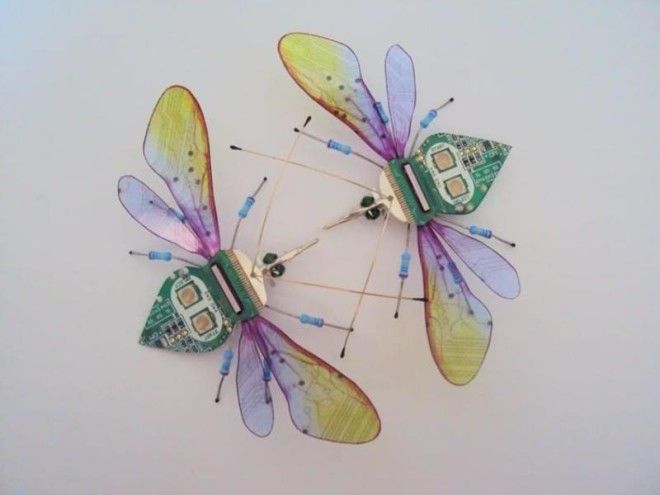
So besides cleaning up a bit and creating beautiful little sculptures, Chappell’s artwork has a purpose.
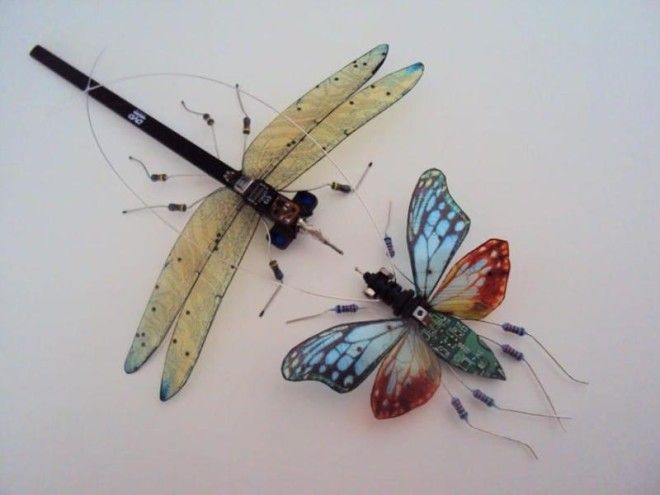
My collection highlights the dangers of planned obsolescence and the ever-increasing amounts of e-waste in the environment,” she explains.
“This is perpetuated by advances in technologies and our ever-growing dependence on modern gadgets.”

By creating and showing her pieces, she hopes to make people aware of the dangers that e-waste poses for the environment, and how even something as seemingly removed from nature as a computer or cell phone is actually deeply intertwined with the natural world.

But Chappell also says her work isn’t merely about the dangers of technology — just when it’s not disposed of properly!

“They are my personal tribute to the wonders of modern technologies,” she says, “[and] the decades of knowledge and passion passed down which led us to them.”
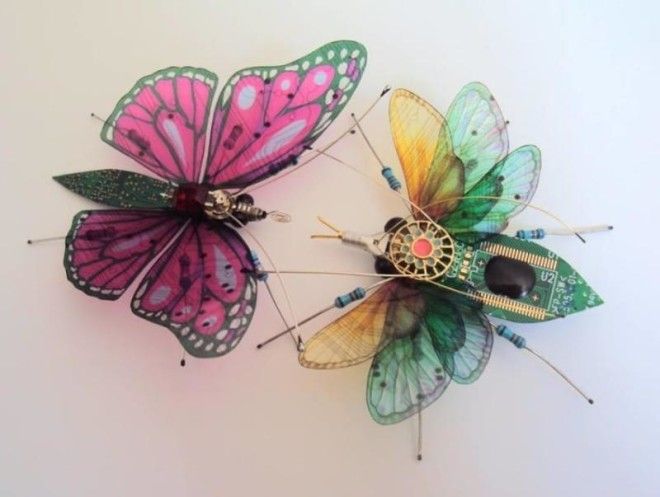
For Chappell, the sculptures celebrate nature as well as technology, and ultimately, human achievement.
By turning them into art, she’s paying homage to the old computers and phones for “their elegance and ingenuity encompassing the incredible technological aptitude and the imagination, talent, and beautiful creativity of the human race.”
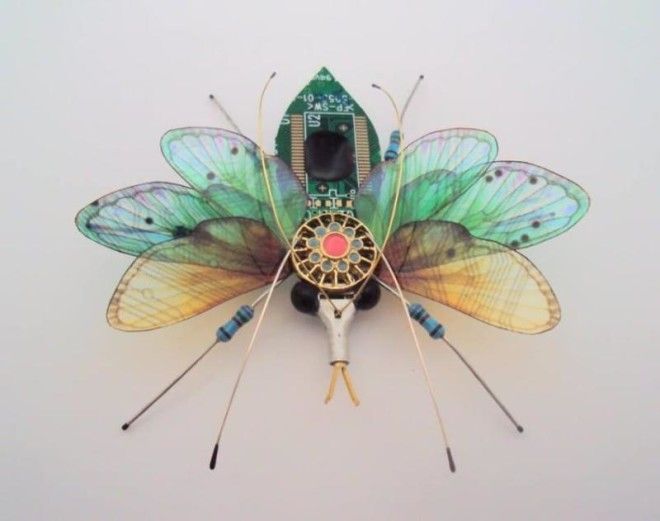
And she hopes we can be inspired to use that talent and creativity to make new solutions to environmental problems, and create a healthier world for the future.
You can see more of Chappell’s work on her Facebook and Etsy shop!

